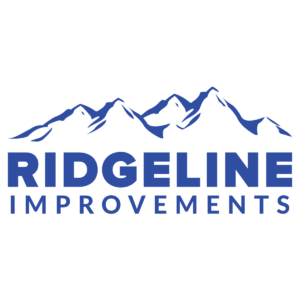Working from home has become the new normal for many, but not everyone has a dedicated space that supports productivity and comfort.
A home addition in Edmonton, like adding a home office, is an excellent way to create a personalized workspace that suits your needs.
If you’re thinking about creating a home office, here is everything you need to know:
Why Add a Home Office? Benefits of Dedicated Workspaces
Creating a dedicated home office offers a range of advantages that go beyond just having a quiet place to work.
Here are some of the key benefits:
Increased Productivity and Focus
A separate office space helps minimize distractions and creates a clear boundary between work and personal life.
This dedicated environment allows you to focus better and get more done in less time. It’s easier to stay on task when you’re not sharing the space with other activities.
Enhanced Professionalism for Virtual Meetings
With virtual meetings becoming more common, having a professional-looking space is a great way to make a positive impression.
A home office provides a tidy, organized background that reflects well on you during online calls. This can be especially helpful for client meetings or team collaborations.
Better Work-Life Balance
Having a specific place to work makes it easier to “switch off” at the end of the day.
This separation between your professional and personal life can improve your overall well-being and prevent burnout.
It’s much easier to relax and enjoy your home life when work isn’t always visible.
Increased Property Value
A home office addition can add value to your property, making it more appealing to future buyers who may also need a dedicated workspace.
It’s a feature that has become more desirable as remote work trends continue to grow.
Tax Benefits
In some cases, you can claim tax deductions for a home office, reducing your overall costs.
You may be able to deduct expenses related to the portion of your home used for business, such as utilities, repairs, and mortgage interest.
It’s always a good idea to check with a tax professional to see what applies to your situation.
Planning Your Home Office Addition: Where to Start
Adding a home office is an exciting project, but it requires thoughtful planning. Here are some key factors to consider before getting started:
- Space Requirements: Determine how much space you’ll need for your desk, storage, and any other equipment.
- Desired Features: Think about what’s important to you, like extra outlets, built-in shelves, or soundproofing.
- Potential Locations in Home: Identify possible spots for your office, such as a spare bedroom, basement, or even a garage conversion.
- Zoning Laws and Permits: Check local regulations to see if you need any permits for your home addition.
These factors will help you create a plan that suits your needs and avoids complications during construction.
Designing an Efficient and Comfortable Home Office Layout
A well-designed office can boost productivity and make work more enjoyable. Consider these tips when planning your layout:
Choosing the Right Furniture
Invest in an ergonomic chair and desk that suit your needs. Comfort is key for long work hours, so prioritize items that support good posture and minimize strain.
Storage solutions like filing cabinets or shelves can keep your space tidy and functional, helping you stay organized and focused.
Maximizing Natural Light
Position your desk near a window to take advantage of natural light, which can improve your mood and reduce eye strain.
If natural light is limited, consider installing adjustable lighting that mimics daylight to create a comfortable work environment.
Organizing for Efficiency
Keep essential items within arm’s reach and use organizers to declutter your desk. A clean workspace can help you stay focused and efficient.
Think about incorporating storage solutions like wall-mounted shelves or under-desk storage to keep your space looking neat and professional.
Personalizing Your Space
Incorporate elements that inspire you, like artwork, plants, or personal photos. A personalized office can make your workspace more inviting, helping you feel more comfortable and motivated throughout the day.
Incorporating Smart Technology for a Modern Home Office

Integrating smart technology can enhance your home office experience. Here are some tech upgrades to consider:
- Smart Lighting Systems: Adjust the brightness and color of your lights to suit different tasks or times of day.
- Voice-Activated Assistant: Use voice commands to manage your schedule, control devices, or play music.
- High-Speed Internet: A reliable internet connection is crucial for video calls and online work.
- Reliable Wi-Fi Coverage: Strong Wi-Fi is needed to prevent disruptions, especially if your workspace is far from your router.
These tech features can streamline your daily tasks and make your home office more efficient and comfortable.
Insulation and Soundproofing: Ensuring a Quiet Work Environment
A peaceful environment is key to maintaining focus during the workday. There are many ways you can reduce noise in your home office:
- Acoustic Panels: These can be added to walls to reduce sound reflection and echo.
- Soundproof Curtains: Thick curtains can help block external noise and keep your workspace quiet.
- Weather Stripping: Seal gaps around doors and windows to prevent sound from leaking in.
- Thicker Carpets or Area Rugs: Adding carpet or rugs can absorb sound and reduce noise levels.
Using these methods will help create a quiet, comfortable workspace where you can concentrate without interruptions.
Budgeting for Your Home Office Addition: Key Considerations
Planning a budget for your home office addition is a crucial step. It’s all about managing your expenses:
Setting a Realistic Budget
Start by estimating the total cost of your project, including materials, labor, and permits. Be realistic about what you can afford, and try to stick to your budget to avoid financial stress.
Prioritizing Essentials Over Aesthetics
Focus on functionality first. Invest in quality furniture and technology before adding decorative touches.
While aesthetics are important, they should complement, not overshadow, the practicality of your office.
Allocating Funds for Technology
Set aside part of your budget for necessary tech upgrades like a new computer, printer, or improved internet connection.
This will help you create a workspace that supports your needs and keeps you connected.
Factoring in Hidden Costs
Don’t forget to account for unexpected expenses like electrical work or additional permits. It’s better to be prepared than caught off guard by unforeseen costs, which can quickly add up.
How to Choose the Right Professionals for Your Home Office Project
Choosing the right contractor can make or break your project. There are some important things you should look for when choosing one:
- Experience with Home Office Additions: A contractor with specific experience in building home offices will be familiar with the unique requirements of creating a functional and comfortable workspace.
- Look at Portfolio: Review past projects to see if their style and quality match your expectations.
- Check References: Ask for references from previous clients to get an idea of their work ethic and reliability.
- Compare Quotes: Get estimates from several professionals to compare pricing and services.
These steps will help you find a reliable professional who can bring your home office vision to life!
Ready to Create Your Ideal Home Office?
Adding a home office can transform your work-from-home experience and boost your property value – and Ridgeline Improvements is here to help.
We’ll help you create a workspace that suits your needs without leaving the comfort of your home.





